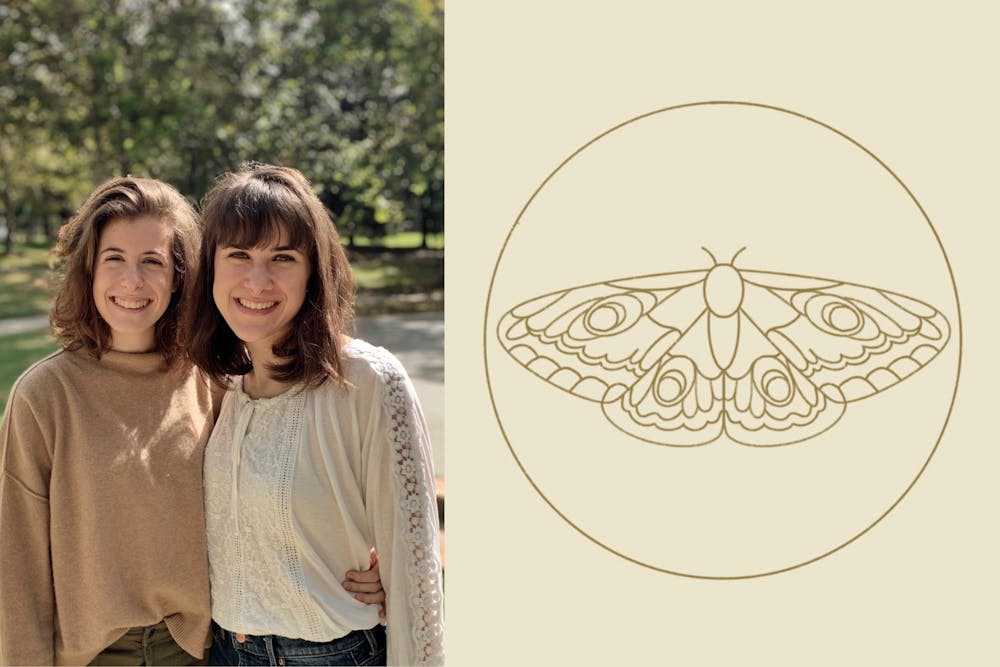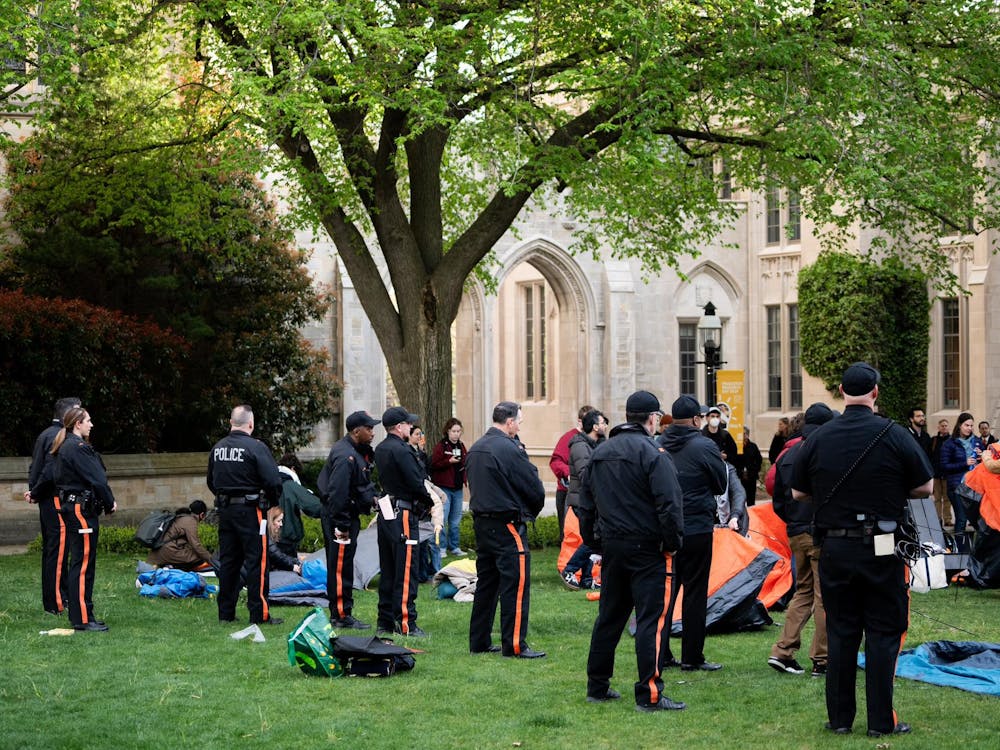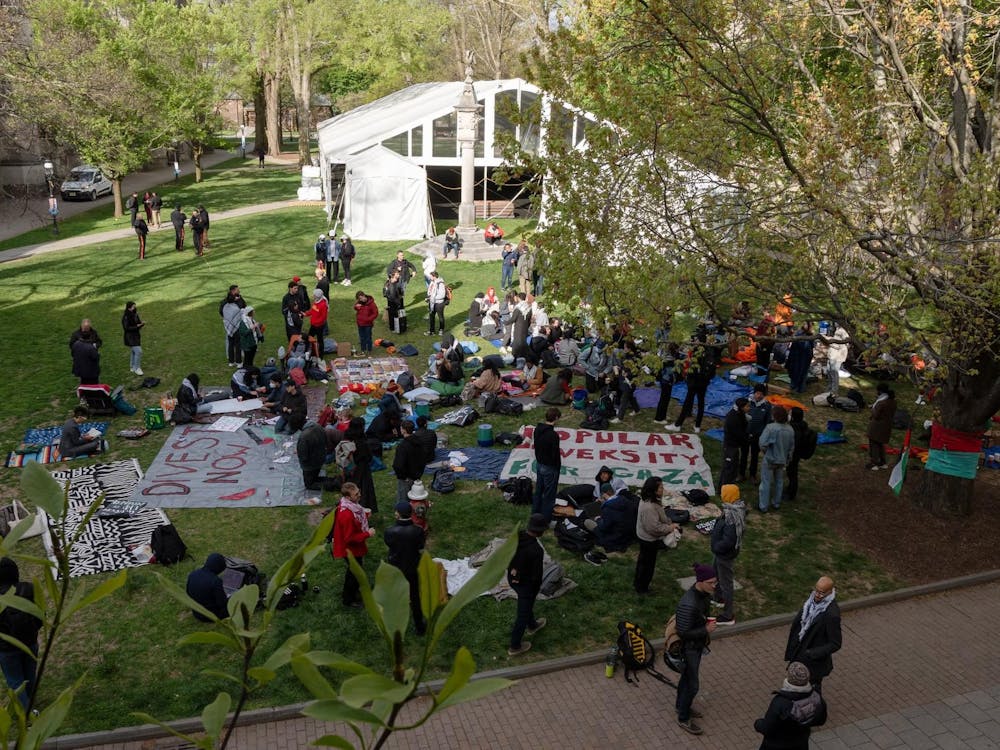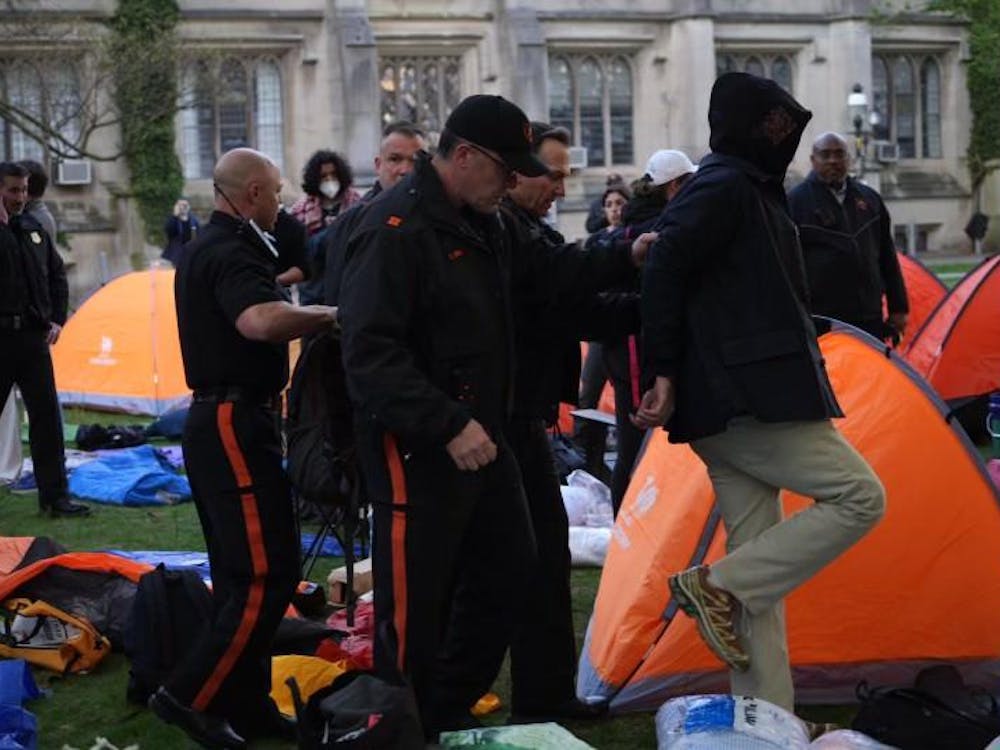During the COVID-19 pandemic, sisters Cassandra James ’23 and Kate James, who is a first-year at Cornell, started an organization called Saturnia Arts that matches artists with people who want art, whether for themselves or others. The Daily Princetonian sat down with them to discuss where the idea for Saturnia Arts came from, how they got started, and their journey since then.
The Daily Princetonian: What’s the story behind Saturnia Arts? How did you come up with the idea and how did you get started?
Cassandra James ’23: I think it was last year. I was doing school from home, and Kate was still a high school senior at that point. We had friends who were struggling really really hard with mental health issues, given the pandemic situation. I think there’s sort of that feeling when you’re watching somebody in that situation that you just feel so helpless, and you wish there was something you could do. Kate is an artist, and I’m a writer, and so the two of us were like, how can we get art to people? Because we know that art just brings people joy — that it can brighten people’s days even for a moment — but we had the restrictions of the pandemic, so how can we send people art in a way that’s safe? So we sat down at our kitchen table, and we came up with a Google Form. And we said, if people fill out the Google Form, then we can have artists volunteer on one end and people sending in requests on the other end, and we can pair them up. That was how Saturnia was born.
Our logo is a moth, and it’s a Saturnia moth ... Saturnia moths are a symbol of endurance through struggle. Our whole thought was [about] how to bring hope to people in the pandemic, in any way that we could. And even though it’s a relatively small way of doing it, that was our pull.
Kate James: It works on both sides, too. As an artist, I knew that I wanted to be making art that was joy-filled. When I heard people wanted to hear messages like that, it encouraged me to work through my art and create things that were about light, and joy, and peace, and comfort, instead of dwelling in those more negative feelings during the pandemic and making art about that. So as an artist, I feel like it’s also been very fulfilling.
DP: What is your mission with Saturnia Arts?
CJ: In one sentence, it’s “spread joy through art.” Our larger mission is just to reach the community. Obviously the pandemic situation has changed now, we’re not necessarily all in quarantine like we used to be, but I think people are still struggling with that feeling of “How do we get back to normal life? What does this look like?”
I mean, I know I’ve been feeling it. It’s been harder to be in large groups of people than it was before. It’s harder to go back to normal schoolwork and normal activities. So I think Saturnia can also fill in that gap, and as everybody transitions back into this new normal, Saturnia is still a source of light, encouragement, and hope for people. Our artists can basically communicate to the people that are requesting art: “There is someone out there who loves you enough, who is willing to take the time to make something for you, to see you, to understand what you need, and to create art.”
KJ: And that need doesn’t really go away, even after the pandemic. A lot of us still check our emails in the morning, and to see a piece of art made for you first thing in the morning, it’s a beautiful way to start fresh, pandemic or no pandemic.
DP: What are your plans for the future with Saturnia?
CJ: We just launched our beautiful new website, saturniaarts.weebly.com, and that’s our first foray into trying to get Saturnia to extend beyond the Princeton community. We’re starting to extend it onto other campuses. Kate is taking it to Cornell. We’re trying to get it to Rutgers as well. We’re going to try to spread it out into other Ivy League schools and then continue to spread it out from there. Our goal is basically to reach any community where people might want to put in requests, if that’s nursing homes, if that’s college campuses, if that’s schools. I think our plans for the future as of right now are basically just extending our reach and making sure that people know about Saturnia.
DP: What was the process of creating your website, and what was your primary platform before?

CJ: This is a fun one. Kate and I, neither one of us had any website building experience. So this was a wonderful case of YouTube University, of going online and teaching ourselves to build a website. And we did it! We learned how to do it. Before that, we were just on Google Forms, but we found that that wasn’t necessarily functional. It works for college students, but some older folks who were filling out the forms were kind of struggling with the technology barrier, so we wanted to have a website that was more streamlined for them to access it. That was kind of the goal with the website. The two of us sat down, watched a bunch of YouTube videos, taught ourselves how to use Weebly, and we built our brand new beautiful website.
KJ: We were on Instagram and Facebook, and we’re still on them, but the website just helps to have one link that has the forms all included that we can send to people.
DP: Website-building aside, what else have you learned from running Saturnia?
CJ: This is not necessarily a tangible thing, but especially in the pandemic, where ... the issues we were dealing with on a day-to-day basis were so overwhelming, it was bad news every time we opened our phones. I think that time taught me that you don’t realize how powerful the tiny things you do for other people really are. The smallest little doodle on a napkin can make somebody feel loved and change their entire day, their entire week, maybe even their entire month. In a time where it feels like it’s a really big problem, we need big solutions, yes that’s true, but we can also think about “What are the little things we can do for people? What little compliment can we pay someone? What tiny boost of encouragement? What word of compassion can we give to other people?”
And I think, attached to that, I think people talk a lot about the power of art, and the power of art to touch people, but I think Saturnia has shown me that in a very literal, physical way, how art can really move people, and make people feel heard, and seen, and loved, in a way that they might not get anywhere else, in a time where it might feel like they’re totally alone and isolated, and no one is listening or seeing them.
KJ: I got to see that in such a dark time with no one around: the idea that someone can voice the smallest thought, like, “I’m lonely today,” and someone will spend hours on a piece, obsessing over that one thought of theirs. I could see in the emails that I was receiving that amount of care, to a passing feeling that someone had, mattered, which was encouraging to me.
DP: What was the hardest part of creating and running Saturnia, and what part has been the most rewarding?
CJ: I think the hardest part was on the technology side and figuring out how to streamline this process. There are a lot of steps in pairing people together. We have to basically compile spreadsheets of everyone who signed up to volunteer, and then everybody who requested art, and then pair those people up, keep track of what’s coming in, who hasn’t fulfilled their requests yet, who has. Keeping all of that information straight was very difficult.
I think the most rewarding thing is seeing the impact it’s made on campus. I’ve had total strangers I’ve never met before in my life come up to me and be like “Oh my goodness, wait, are you the one who’s working for Saturnia? I’ve seen your name on the listservs, and I requested art, and it totally made my week. Thank you so much.” Hearing that positive feedback, hearing how our little 2 a.m. doodles and midnight poems can impact people has been enormously, enormously rewarding.
KJ: I think the hardest part for me is when I’ve made a piece of artwork, and when I go to hit send — surrendering the control, like “Is this exactly what they need? I should’ve spent longer on this,” and just being like, “This is just fine, and I’m sure they’re going to love it,” just as a creator because you’re dealing with someone’s raw emotion that they’ve vulnerably put into an email. I really want to bring forth something that I’m proud of and that I think they’re going to love.
The best part is still just the emails afterward. Also, seeing a face on a Zoom call and being like “Oh my goodness, I made art for you! How are you doing?” is really exciting.
DP: And if people want to get involved, how can they help out?
CJ: The easiest way to do that would be to go on our website. Under our volunteer tab, you can sign up there to make art, or writing, or music, or dance, or whatever you like to create — and big, big emphasis on no experience required. We have gotten everything from a doodle of a unicorn on a piece of notebook paper, all the way to a finished masterpiece made from a sculpture. So no experience required. All that really matters to us is your heart to give other people joy and encouragement and compassion and love. So whatever you produce with that heart, that’s what we’ll take.
DP: Is there anything else you’d like readers to know?
KJ: I think if you are an artist and you’ve made work, don’t be embarrassed to come and ask for artwork. Because a lot of the time, as artists, when we’re pouring our hearts out, it can be nice to have something come back. I know as an artist, a visual artist, I like receiving poetry and words that I can hang onto just because I don’t produce work in that way.
CJ: One thing, which is more on the functional side, we’re just encouraging people to spread the word about the website, to request art for other people. If you have somebody in mind, if it’s your grandmother, your neighbor, the mailman, whoever, definitely request art for other people.
Additionally, you can volunteer, but you can also join our staff. If you would like to make art full-time with us for the semester, you can email us at saturniaarts@gmail.com and sign up to join our staff. And we have a lovely staff. It’s a mix of Cornell, Rutgers, and Princeton students. They’re all absolutely wonderful people. Huge shoutout to our staff because this would not be possible without them. It truly would not. They have saved us on more than one occasion. They are incredible and their heart for other people is astounding. So if you would like to join a team of fabulous people who have a heart for spreading joy through art, definitely join the staff.
Cathleen Weng is a senior writer for The Prospect who often covers music and culture. She can be reached at cweng@princeton.com or on Twitter and Instagram at @cathleenweng.









